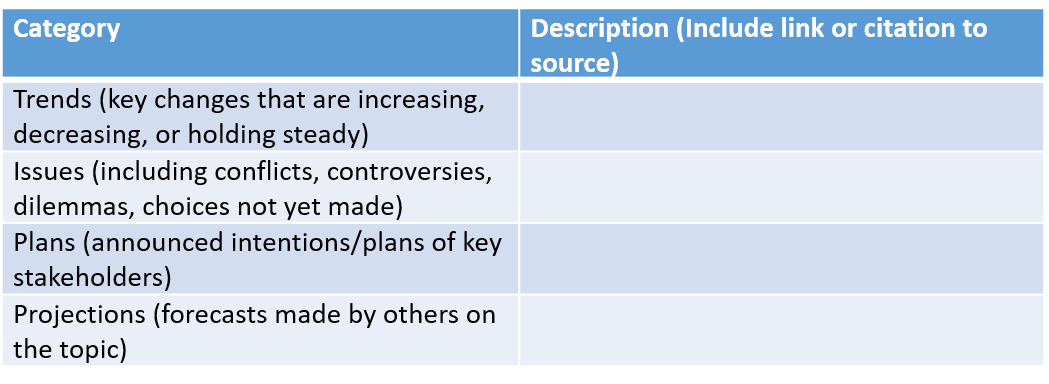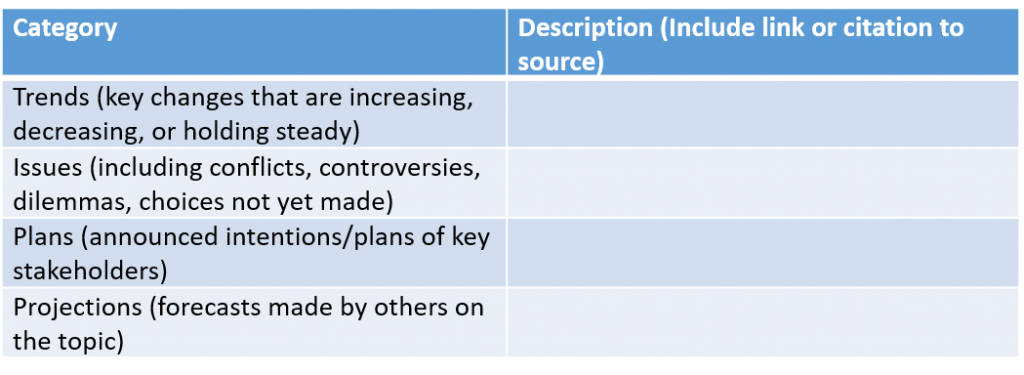Last time we talked about the different approaches we used to develop inputs to create the ingredients for the baseline and alternative futures. In the revised approach, we are going to use the inputs to first create the drivers. To feed an archetype scenario process, one needs drivers (aka variables). Once of set of drivers is identified from the research and scanning, each driver is plugged into each archetype to see how it plays out differently.
In Futures Research class this fall, we are testing a new “all-purpose” inputs worksheet. Again, a key distinction is that the inputs are aimed primarily at constructing the drivers, rather than as direct inputs into the scenarios. By all-purpose, it means that the baseline and alternative futures do not have separate inputs anymore (like we described in part two, in which there were baseline inputs and alternative inputs).
Below is the revised inputs worksheet consisting of four key inputs [keep in mind that the scanning library is another input as well]
I have long included a trend inventory of anywhere between 75-150 trends in a project. And we often defined trends very loosely such that issues, plans, or projection might be written as trends to create one master inventory. I suppose as an academic, such loosey-gooseyiness cannot be tolerated, so we’ll keep the trend inventory to trends, and keep the other inputs separated. It’s only four, right, not too much to deal with.
Next time, let’s talk about how we get to the next step: drivers. — Andy Hines


Leave a Reply